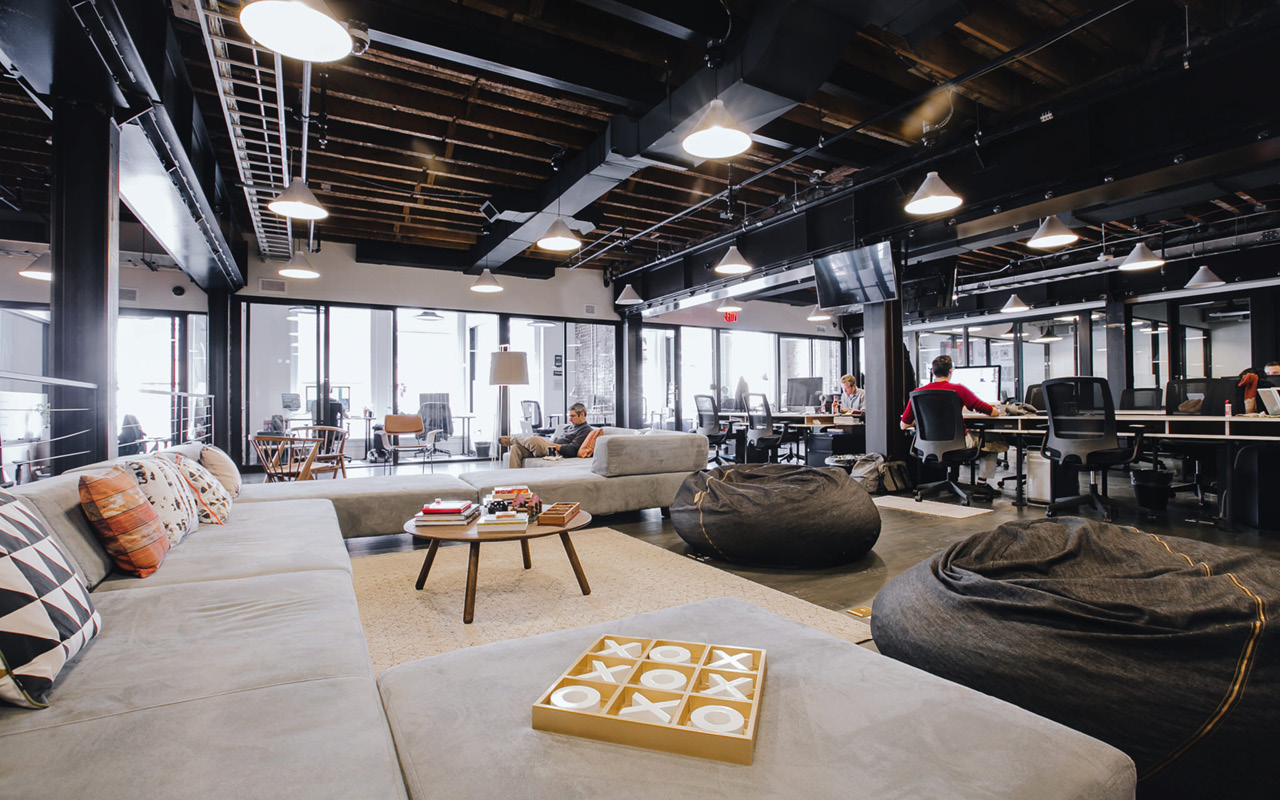In recent years we have seen a significant shift in the way that people and businesses are approaching the working environment. At the forefront of this trend is ‘co-working’, the practice of sharing office space with other businesses and freelancers. What is driving so many towards co-working, what advantages do brands see from this shared approach to work space, and how are big hitters such as WeWork planning on rewriting the professional rulebook?
Co-working has seen an unprecedented rise over the last decade. In fact, the number of co-working spaces worldwide has risen from just 75 in 2007 to an incredible 7,800 in 2015. The businesses making use of this rapidly multiplying shared office space are extremely diverse, ranging from tiny start-ups to massive multinationals such as Whole Foods and Twitter. These businesses are united by a common perception of the advantages that co-working can bring.
Two closely related things above all others appear to be driving the co-working revolution: community and collaboration. 70% of people using co-working spaces say they either ‘very strongly’ or ‘quite strongly’ feel part of a community, and cite this as a major reason for them choosing to work in a co-working space. Many co-working spaces work hard to foster this sense of collaborative community, actively adapting the architecture of the their buildings and their house rules to encourage people to sit next to each other and talk. Dutch organisation Seats2Meet have converted 60 unused public spaces into co-working venues, but offer their free seats and WiFi only to people who actively engage with and talk to each other. Meanwhile, market leader WeWork has developed an app that allows members to post messages, questions and opportunities to the entire global WeWork community. This allows people to collaborate with up to 40,000 likeminded entrepreneurs worldwide, something unheard of for even the biggest global corporations.
 (Image credit: WeWork)
(Image credit: WeWork)
The advantages offered by co-working spaces are clear, and touted loudly by office providers and co-workers alike, but why has co-working taken off so emphatically in the last few years? Recent trends in our approach to working may be to blame. 74% of millennials prefer flexible working hours, while 88% would choose a collaborative work culture over a competitive one. Meanwhile, a whopping 60% of this group would leave their job after just 3 years if the culture wasn’t right, regardless of pay and perks. With today’s young workforce looking for flexible, collaborative work, it is no wonder that brands are turning to co-working in order to attract the best talent.
So what does the future hold for co-working and the office environment in general? WeWork has set its sights on world domination, with over $1 billion of recent backing helping them to spread to 80 locations in 21 cities already. Several others are looking to join them on this crusade to revolutionise the office environment, meaning that by 2020 it is predicted that 60% of people will no longer be tethered to a corporate office (up from just 30% in 2013).
Does this mean it’s time to clear your desk and hot-foot it to the latest collaborative space down the road? The jury is still out on whether this fashionable approach to working is effective long-term, or whether it’s worth the increasingly premium membership fees. However, in this age of collaboration, co-working spaces are likely to be the perfect solution to help brands nurture and grow talent, and stay ahead of the ever-changing curve.
